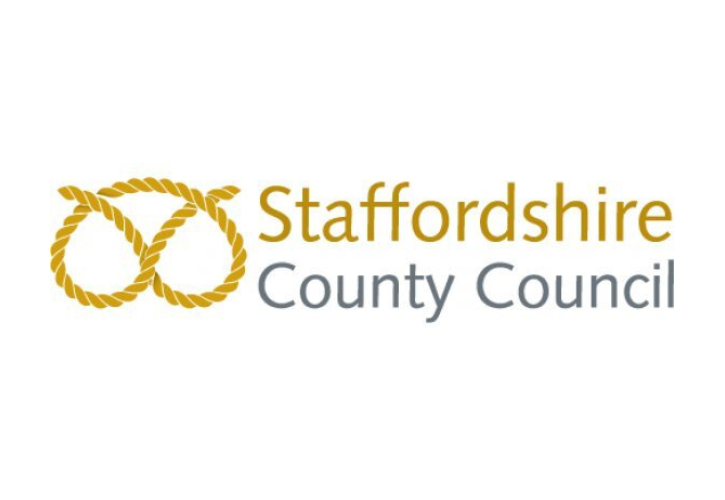Let’s have the all-in-one HR software versus pure-play HR and recruiting software debate. That is, the generalist versus specialist, Swiss army knife versus toolbox, one-ring-to-rule-them-all versus… well. You get the picture. That debate.
Because there are strong opinions on both sides of the coin. And both have advantages and disadvantages. And making the right choice is a really, really big deal. It’s a business strategy thing, not just a tactical thing.
So let’s go.
A note before we begin.
Look. We’d be lying if we said we were unbiased (but hey – you’re on our blog. We’re allowed to be off the fence, here of all places.)
But that doesn’t mean we’ll misrepresent the truth. There are some benefits to all-in-one HR recruitment software and some disadvantages to pure-play best-in-class tools – we talk about both honestly. But we’d be in the wrong business if we didn’t believe pure-play wins out.
(Spoiler alert.)
What’s the difference between pure-play and all-in-one?
First things first, let’s make sure we’re all talking about the same stuff.
When we say all-in-one HR tools, we mean software like a Human Resource Information System (HRIS) or Human Resource Management System (HRMS). That is, a generalist HR platform that can handle everything related to HR.
If you’re using an all-in-one system, you likely run all HR tasks like recruitment, onboarding, performance management, training and payroll admin through one platform.
Pure-play platforms are the opposite.
They’re specialist tools dedicated to one task. That means, an ATS for recruitment. A performance management tool for performance management. An LMS for training. And so on.
Both options have fierce proponents and fierce detractors. Let’s unpick the advantages and disadvantages of each.
What are the advantages of all-in-one HR software?
Typically, it’s the purse-string-holders who prefer all-in-one HR software. One platform means one supplier. One invoice. One line item for budgeting. All-in-one software is typically seen as an easier way to control costs. And it’s often cheaper than pure-play HR and recruiting tools.
Also, one platform means one interface. The more different tools you have, the more different tools you need your people to learn to use.
Using one interface for every HR task means everyone in the broader HR function can turn their hand to other tasks within the HR sphere easily, because they’re already familiar with the system.
All-in-one also removes the issue of information siloes. Data can move easily from recruitment through the employee lifecycle because you’re using one, integrated piece of software throughout.
There’s also a common perception that all-in-one HR software providers have been around longer, so are more reliable. As the old adage goes, nobody gets fired for hiring IBM.
Those are the advantages. Let’s consider the flipside.
What are the disadvantages of all-in-one HR software?
All-in-one HR software is a generalist tool. Which inherently comes with limitations.
The major issue is, although all-in-one systems trade off doing everything – they’d don’t do everything well. Typically they have one core focus and then add-on functionality in different areas as the business creating the platform scales.
So for example, you might be using an all-in-one system that’s fantastic at talent management but applicant tracking is virtually non-existent. In practical terms, that might mean budget decision-makers and HR generalists are happy, but your talent acquisition team are held back from doing the best job.
And everything – productivity, profitability, culture – starts from recruiting the right people. If you disempower your recruiters, you’re disempowering the business.
If your business aspires to be exceptional, you need the right software to support exceptional performance in every task. And all-in-one HR software typically* isn’t.
*There are exceptions, of course. But all-in-one software that’s exceptional at every task demands such huge internal resources to build and support that it’s necessarily expensive. Which negates one of the reasons for choosing all-in-one software anyway.
The other usual issue with all-in-one HR software is flexibility. Or, more accurately, lack thereof. All-in-one systems are often more rigid – what you see is what you get.
Many businesses simply don’t want to work around their supplier’s idea of ‘best practice’. They want a product that can be easily configured to their processes, workflows and limitations. That’s something you don’t often get with all-in-one systems. Or, when you do, any changes incur significant extra cost.
Let’s move onto pure-play HR and recruitment tools.
What are the advantages of pure-play HR and recruiting tools?
Pure-play tools mean using the steak knife to cut your steak. Sure, other tools might get the job done OK. But do you want to hack away at your meat and end up wishing you’d never bothered ordering steak, or do you want to slice nice tender bitesize bits and enjoy it?
Enough with the metaphor. The point is, it’s a philosophy.
Do you believe people are the lifeblood of your business? Do you believe in hiring the best people, then empowering them to be their best? If you believe those things, you need best-in-class tools to reach those goals.
Like, if you want to deliver the best possible candidate experience, a good enough ATS isn’t good enough. And a pure-play specialist ATS will always be better than an ATS add-on to an all-in-one HR platform.
Pure-play HR and recruitment products are typically much more flexible, too.
It’s true that nobody got fired for hiring the huge legacy provider. But huge legacy providers are notorious for resting on their laurels. They’ve got no incentive to configure their solution to you, and no incentive to go above and beyond with service.
The opposite is true for pure-play specialist providers, who’ve typically sprung up in the last decade as an antidote to ‘who cares less’ legacy service. Such providers (like Tribepad…!) are disruptors – and well-suited to businesses who want a partnership, not just an anonymous vendor.
Flexibility and exceptional support set Tribepad apart. All our products are individually configured to meet our customers’ unique needs, in close partnership with the people who’ll use it day-to-day.
You’ll wind up with a recruiting product stack that does exactly what you need, how you need, without anything you don’t need. And we’re always by your side to make sure that’s always the case. (Read more about how configurable we are…)
Now, the disadvantages. (We told you we’d be fair).
What are the disadvantages of pure-play HR and recruiting tools?
It’s like everyday life. If you can get away with one jumper all year, that’s easier than having several different jumpers.
Pure-play tools mean having different jumpers for every occasion. If you’re the sort of person that always wants to be well-dressed and well-prepared, that’s great. But some people just prefer to carry one jumper – even knowing they’ll get cold sometimes.
It’s also true that buying one jumper is typically cheaper than buying several separate jumpers. But the cost-saving is rarely what it seems.
For instance, many all-in-one HR software providers include add-on standalone products to fill functionality gaps. So in that case, you’re not buying one jumper. You’re buying one jumper and then later, when you realise the jumper doesn’t keep you warm, buying a separate underlayer. It’s a false economy.
Another potential disadvantage is the brain-drain associated with product use and training.
As we said, an advantage of all-in-one software is one interface. If you’re using pure-play tools, you might use an ATS from one provider, an onboarding platform from another, an LMS from another. There’s arguably a lot going on there.
But again, that’s not as much a downside as it seems.
First, because your business reality mightn’t involve much overlap. That is, how often does your training coordinator really use your ATS?
Then second, because good people would almost always rather use the best tools for the job, even if they have to learn from scratch. Not the second-best tools just because they’re there.
(That’s why you get plucky hiring managers and recruitment leaders who’ll fight endlessly for a best-in-class tool, even if finance won’t sign-off. Why wouldn’t you equip your front-line with their weapons-of-choice in their arsenal?)
Then third, because good products are easy-to-use anyway. Easier-to-use than an one-in-one tool because they’re streamlined and designed exactly for the task at hand. So your training coordinator doesn’t waste hours looking at buttons meant for recruitment, and vice versa.
All Tribepad’s products have a sleek, easy-to-use interface. They’re intuitive and simple, despite taking massive complexity in their stride. Make our demo team’s day and let them prove it? Book a demo here.
Then, finally, there’s the question of integration. The more systems you use, the more chance that siloes spring up. That’s true. But again, that’s a truth you can easily mitigate by choosing a tool that plays well with others.
Take the Tribepad ATS. We’re not idiots – we know our customers need an ATS that syncs headache-free with the other tools they use. So we integrate with a whole ecosystem of companies and partners – to provide a joined-up experience, however many vendors you’ve chosen.
If you’re concerned about the complexity of your existing recruitment and HR product stack, invest in tools that can integrate seamlessly with your current landscape.
What’s the upshot?
All-in-one HR software and pure-play specialist HR and recruitment tools both have upsides and downsides. But there are two reasons pure-play comes out on top.
One, because the disadvantages of using pure-play tools are more easily mitigated. Which doesn’t leave many reasons to choose all-in-one software.
Like, yes, using a mixture of pure-play tools means you need to work harder to avoid data siloes. So choose a tool that integrates well your existing systems.
Yes, legacy providers are often seen as safer. So choose providers with a proven track record securing ROI for customers in your industry. (Ideally multiple award-winning ones, but who’s bragging?)
Yes, using different tools means training people to use different tools. But choose easy-to-use intuitive systems and it becomes a moot point.
And two, because pure-play recruiting and HR software allows you to cherry-pick the best tools for the job. And unless you’re in the business of being second-best, why would you choose second best?
You might’ve guessed, Tribepad are specialist recruitment software product providers. Our ATS is our best-known, with video interviewing, onboarding, contractor management and job board systems completing the stack. Find out more.






